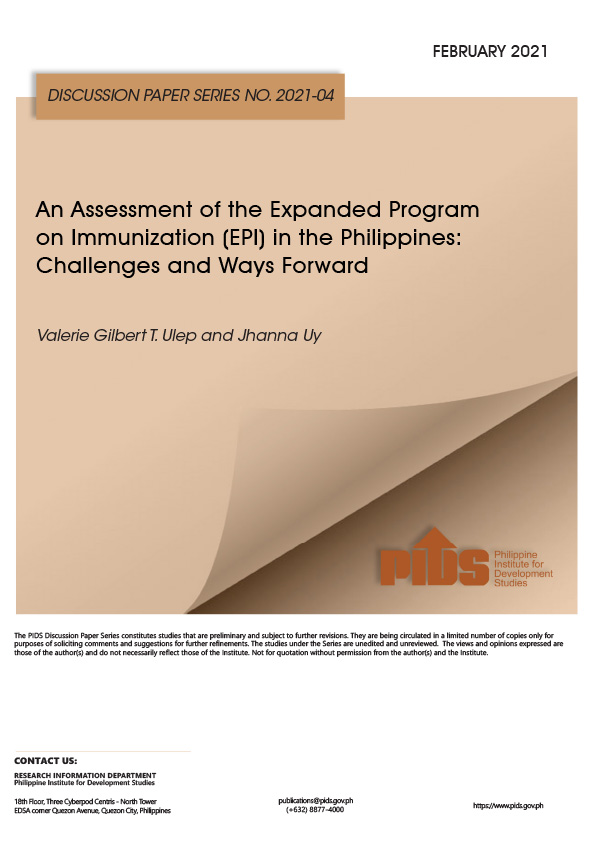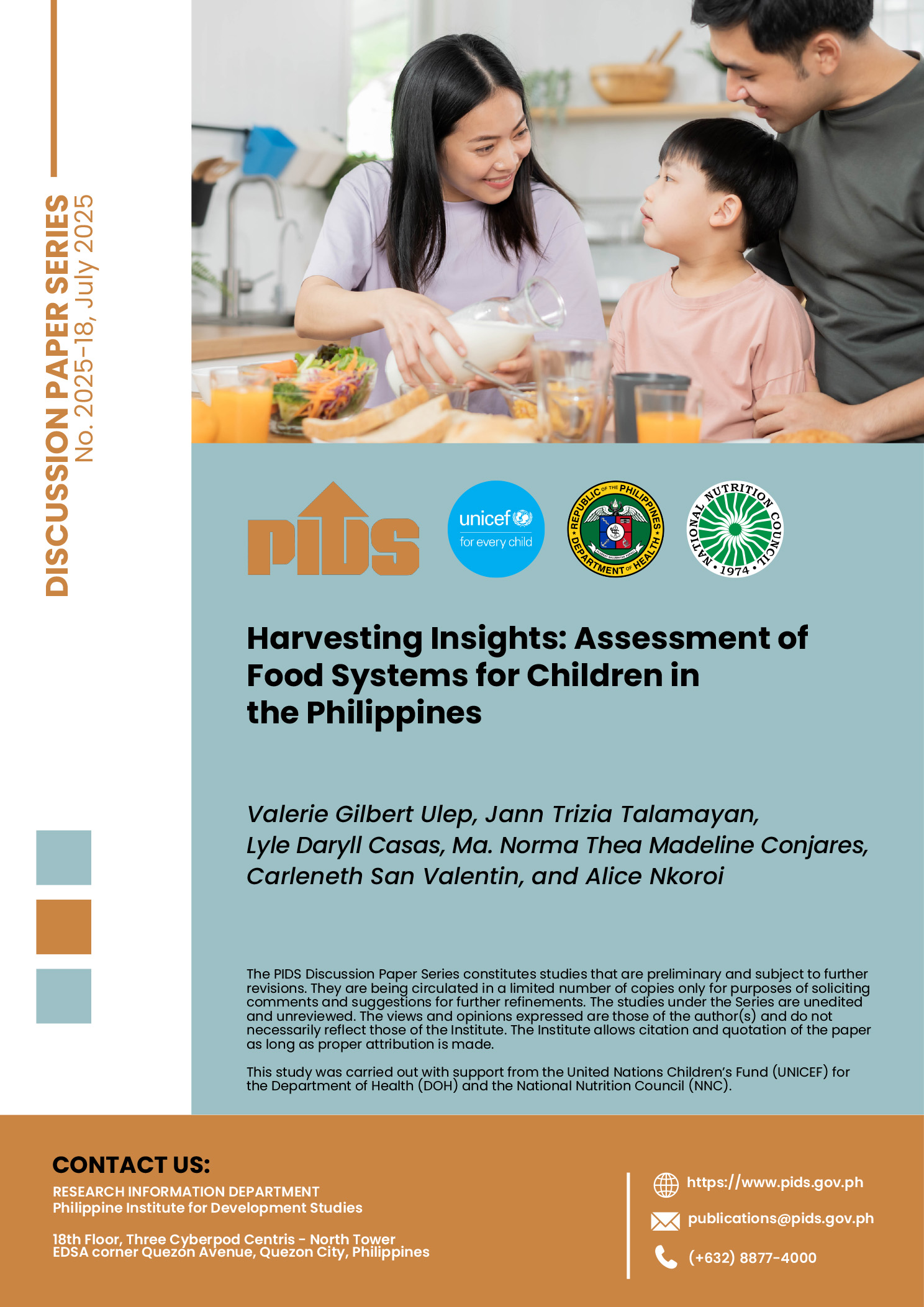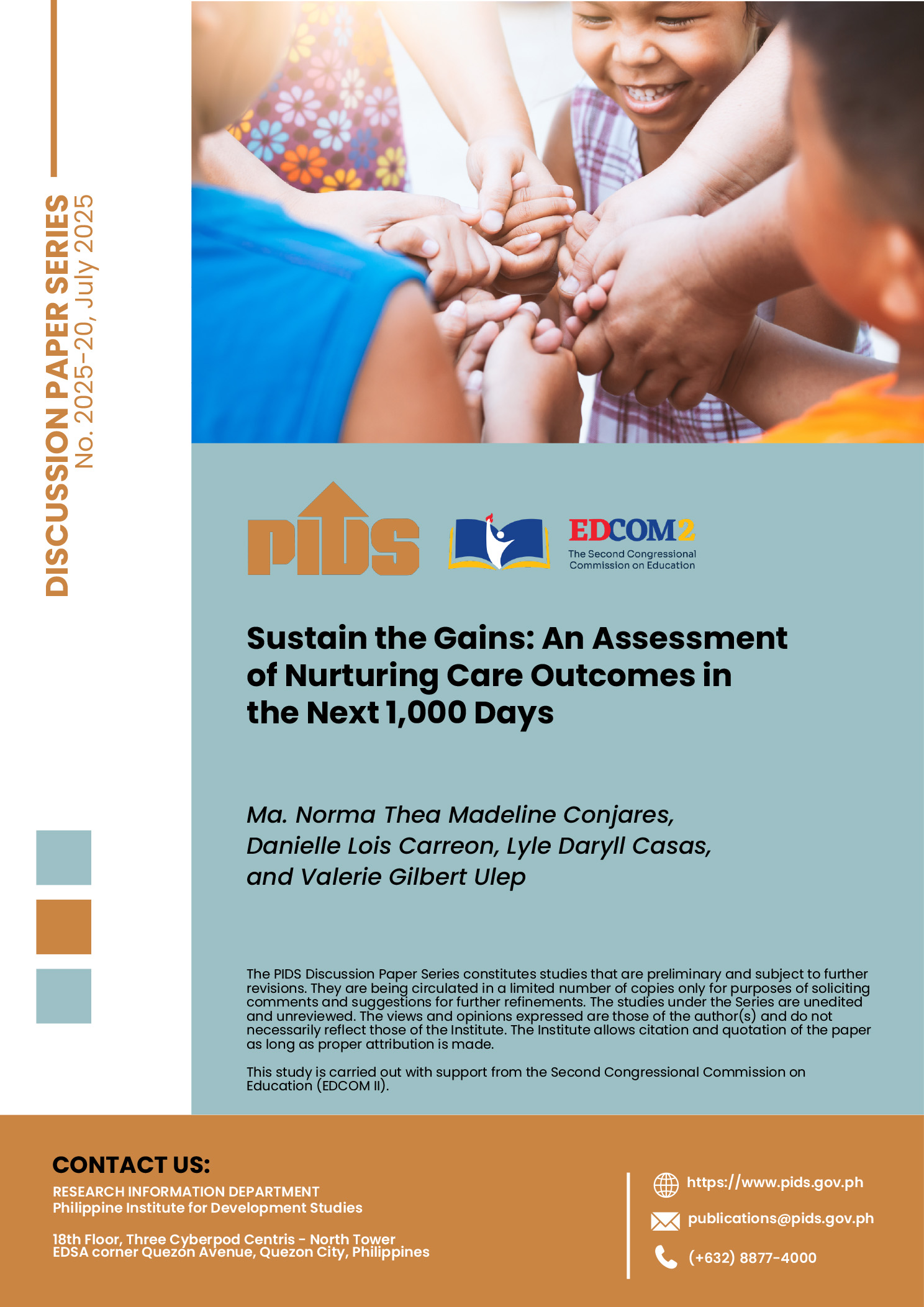The Philippine Expanded Program on Immunization (EPI) has been in existence for almost 40 years. It is one of the major programs of the Department of Health (DOH) that aims to provide Filipino children with access to safe and effective vaccines against diseases like measles, diphtheria, tetanus, and whooping cough.
The Philippine EPI has achieved many milestones in this regard, including the steep decline in the country's mortality and morbidity due to vaccine-preventable disease rates. Moreover, polio and maternal and neonatal tetanus was certified as eliminated in 2000 and 2017, respectively.
Despite this progress, the program has never achieved its target to fully immunize at least 95 percent of Filipino children. Coverage of basic vaccines has only hovered between 70 and 80 percent in the last 30 years.
This study assesses the performance of the EPI in the Philippines. Central to this assessment is the policy question: why has the country struggled to maintain immunization coverage over the years and repeatedly failed to achieve its national immunization target?
While demand factors like vaccine confidence have contributed to the weak performance of the program, the sharp decline in immunization coverage is largely a result of deep-seated supply-side systems issues related to leadership, planning, and the supply chain, which led to recurring vaccine stock-outs in the past decade.
Comments to this paper are welcome within 60 days from date of posting.
Email publications@mail.pids.gov.ph.
Citations
This publication has been cited 3 times
- Andrea Jobelle Adan . 2021. ‘Kung bakuna lang sana’. Pinoy Weekly.
- Cai Ordinario . 2021. 40 years hence, PHL’s full immunization goal for children remains a ‘quixotic’ quest – PIDS. Business Mirror.
- Panay News . 2021. Supply. Panay News.













